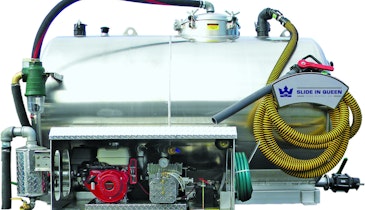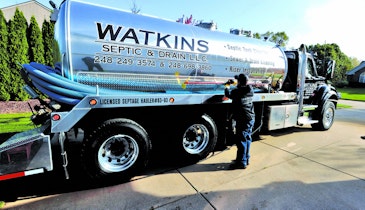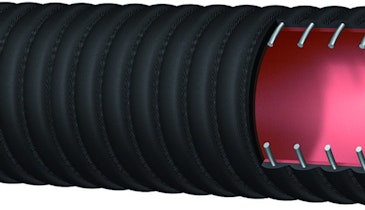This is a continuation from last month’s question from a new inspector getting started on the job.
Previously I wrote about getting to know your installers and how to check on a basic onsite trench system. This month I will elaborate on mound systems and some other features of an onsite sewage treatment system.
Sewage treatment mounds have become popular in many parts of the country. A properly designed and constructed mound is an excellent onsite sewage treatment system. You most likely have learned about the design features of mounds during your training.
The mound must be located in the area specified by the site evaluator. As with any onsite system, the area for the mound must be staked in the field for the installer’s information.
The first step in mound construction is preparation of the soil surface. Vegetation must be removed and the surface of the soil scarified. Never let an installer use a tiller on the ground surface. The soil structure will be destroyed and the mound will fail.
The proper time to check the installation of a mound is when the soil is being prepared. Ask the installer to let you know when the ground surface will be prepared for the mound. Make your inspection at that time, since proper surface soil preparation is critical to the success of a mound.
The sand used in a mound must be clean and include little fine material, such as silt or clay. Get to know the origin of the sand and check for silt and clay. Put about 2 1/2 inches of sand in a fruit jar and add water to three-fourths full. Shake well and let stand for several minutes. If there is a layer of silt or clay on top of the sand more than 1/4-inch thick, the sand has too many fine particles. A biomat will form on top of the sand layer and the mound will fail. That sand must not be used under the rock layer of the mound.
Heavy equipment with wheels must not be allowed in the mound area. Such traffic will compact the soil under the mound. The sand must be dumped on the side of the prepared surface area and the sand layer pushed into place with a track-type tractor. At least 12 inches of sand should be under the tracks at all times to protect the original soil surface. The rock layer must be placed with a backhoe bucket or similar equipment to ensure no heavy equipment operates on the mound.
The pressure distribution laterals of the mound should be checked to be sure that the holes are properly drilled and clean. You can use your “book learning” to check the size and spacing of the perforations.
Some mounds use gravelless trenches instead of a rock layer. A pressure distribution lateral must be installed the length of each gravelless trench. Do not allow gravity distribution in any mound.
Use “book learning” to check that the mound dikes and side slopes are proper. A side slope of three horizontal to one vertical is maximum steepness. A dike side slope of 4:1 is much better and easier to mow. The finished mound should have grass cover established by the installer.
Pressure distribution requires a dosing tank and pump station. Be sure the wiring is connected properly and an alarm indicates a pump failure. An inspector qualified in electrical systems must make this type of inspection.
Both the sewage tank and the dosing tank will have manholes. The sewage tank manhole is for removing accumulated solids from that tank on a regular schedule. The pumping tank manhole is for servicing the pump and controls.
Easy manhole access is desirable for both services. Safety is an issue, and the manhole cover must be locked or otherwise so secure that only an authorized person can get access to the tank.
Many sanitary codes now specify that manhole covers of sewage tanks and dosing stations can be brought to the ground surface. If this is done, the manhole cover must have a locking device to prevent unauthorized entry. Check the manhole covers on all sewage tanks and dosing stations to see if they meet specifications.
You will need to make a final inspection on the completed installation. The installer will want to set a schedule and time for that. However, it is a good idea to “drop in” for an inspection as systems are being installed. That is the best way to check for possible code violations.
When you find installers who always follow proper procedures, you won’t need to check their work as often. The few installers you find following incorrect procedures will need more unannounced inspections. If you continue to make unannounced inspections, you will generally find fewer mistakes will be made.
Remember, you are working for the future owner of the onsite sewage treatment system to make sure a proper system is installed. Responsible installers have the same goal.
Follow your sanitary code on all major items. If you require an installer to change some construction feature, be sure you have a statement in the code to back up your request. Also, be sure there is a logical reason for the provision.
Good luck on your new job. Using common sense and working with your installers will make your work go a lot easier. It will also go a long way toward having proper onsite sewage treatment systems installed in your area.





